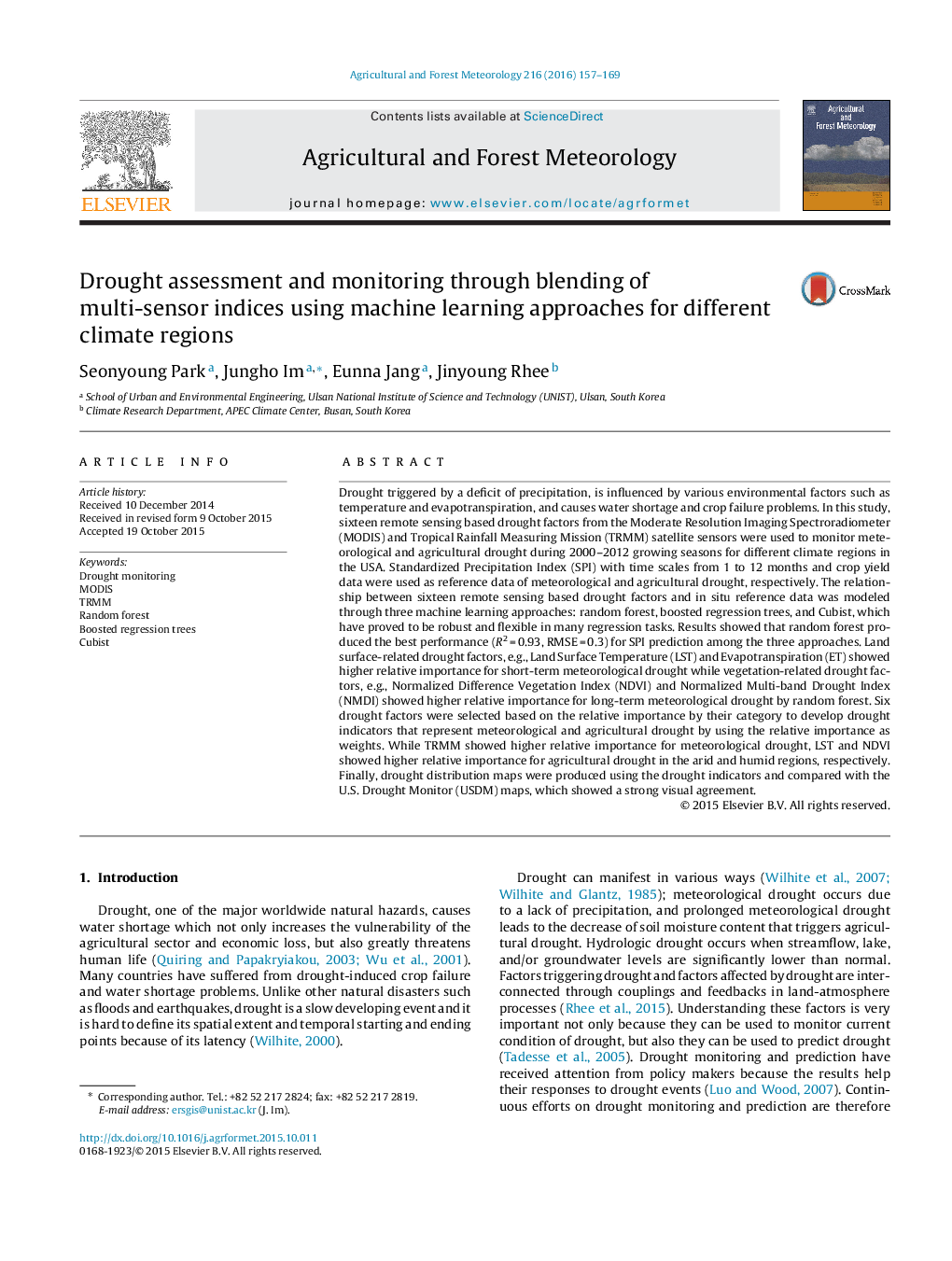| کد مقاله | کد نشریه | سال انتشار | مقاله انگلیسی | نسخه تمام متن |
|---|---|---|---|---|
| 6537120 | 158318 | 2016 | 13 صفحه PDF | دانلود رایگان |
عنوان انگلیسی مقاله ISI
Drought assessment and monitoring through blending of multi-sensor indices using machine learning approaches for different climate regions
ترجمه فارسی عنوان
ارزیابی و نظارت بر خشکسالی از طریق ترکیب چند شاخصه حسگر با استفاده از روش های یادگیری ماشین برای مناطق مختلف آب و هوایی
دانلود مقاله + سفارش ترجمه
دانلود مقاله ISI انگلیسی
رایگان برای ایرانیان
کلمات کلیدی
موضوعات مرتبط
مهندسی و علوم پایه
علوم زمین و سیارات
علم هواشناسی
چکیده انگلیسی
Drought triggered by a deficit of precipitation, is influenced by various environmental factors such as temperature and evapotranspiration, and causes water shortage and crop failure problems. In this study, sixteen remote sensing based drought factors from the Moderate Resolution Imaging Spectroradiometer (MODIS) and Tropical Rainfall Measuring Mission (TRMM) satellite sensors were used to monitor meteorological and agricultural drought during 2000-2012 growing seasons for different climate regions in the USA. Standardized Precipitation Index (SPI) with time scales from 1 to 12 months and crop yield data were used as reference data of meteorological and agricultural drought, respectively. The relationship between sixteen remote sensing based drought factors and in situ reference data was modeled through three machine learning approaches: random forest, boosted regression trees, and Cubist, which have proved to be robust and flexible in many regression tasks. Results showed that random forest produced the best performance (R2Â =Â 0.93, RMSEÂ =Â 0.3) for SPI prediction among the three approaches. Land surface-related drought factors, e.g., Land Surface Temperature (LST) and Evapotranspiration (ET) showed higher relative importance for short-term meteorological drought while vegetation-related drought factors, e.g., Normalized Difference Vegetation Index (NDVI) and Normalized Multi-band Drought Index (NMDI) showed higher relative importance for long-term meteorological drought by random forest. Six drought factors were selected based on the relative importance by their category to develop drought indicators that represent meteorological and agricultural drought by using the relative importance as weights. While TRMM showed higher relative importance for meteorological drought, LST and NDVI showed higher relative importance for agricultural drought in the arid and humid regions, respectively. Finally, drought distribution maps were produced using the drought indicators and compared with the U.S. Drought Monitor (USDM) maps, which showed a strong visual agreement.
ناشر
Database: Elsevier - ScienceDirect (ساینس دایرکت)
Journal: Agricultural and Forest Meteorology - Volume 216, 15 January 2016, Pages 157-169
Journal: Agricultural and Forest Meteorology - Volume 216, 15 January 2016, Pages 157-169
نویسندگان
Seonyoung Park, Jungho Im, Eunna Jang, Jinyoung Rhee,
